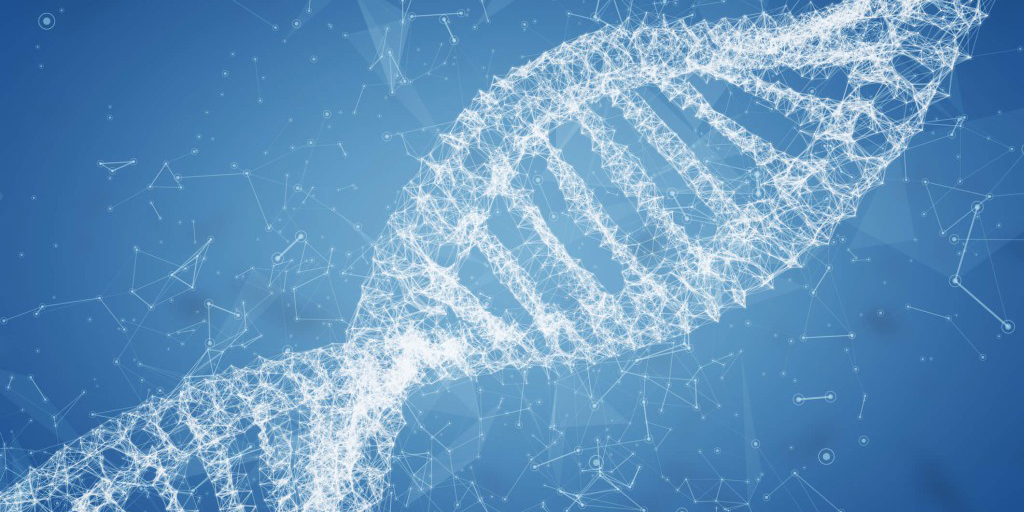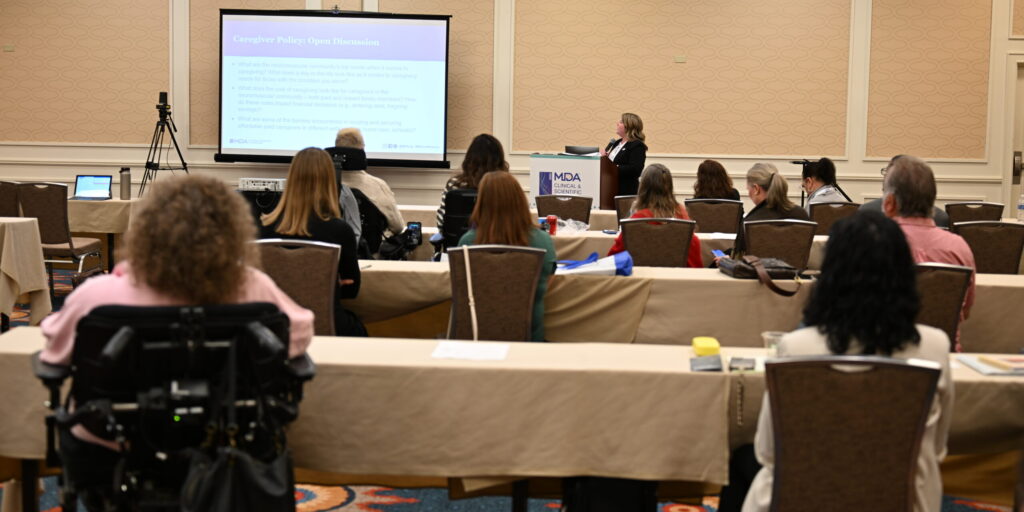
Simply Stated: Is Muscular Dystrophy Genetic?
By Jeanene Swanson | Monday, August 5, 2019
5 Second Summary
“Simply Stated” is a Quest column designed to explain some terms and basic facts about neuromuscular diseases.
Find more at Mdaquest.org/tag/simply-stated
The muscular dystrophies are a group of neuromuscular diseases that cause weakness and degeneration of the skeletal (voluntary) muscles. Muscular dystrophies are generally considered genetic diseases, or diseases that arise from genetic mutations, which can be either inherited or spontaneous.
Some muscular dystrophies have been found to have a genetic component, which means a genetic mutation is known to cause or be associated with the disease. Typically, the gene mutation is passed down from either the mother or the father (known as genetic inheritance). Sometimes, genetic mutations occur spontaneously, leading to sporadic cases.
Generally, if a disease-causing gene is recessive, two copies of the defective gene (one from each parent) are required to produce the disease. Each parent would be a carrier of the genetic flaw but wouldn’t usually have the disease. If a disease is dominant, then only one copy of the genetic defect is needed to cause the disease. Anyone with certain gene flaws will have disease symptoms and can pass the disorder to children.
For example, Duchenne muscular dystrophy (DMD) is inherited in an X-linked pattern. DMD is caused by mutations in the DMD gene, which makes dystrophin, a protein that is critical for maintaining the structural integrity of skeletal and cardiac muscle cells. (Mutations in this gene might also cause Becker muscular dystrophy (BMD), which is similar to DMD.) DMD is X-linked because the gene that can carry a DMD-causing mutation is on the X chromosome. Every boy inherits an X chromosome from his mother and a Y chromosome from his father. Girls get two X chromosomes, one from each parent. Each son born to a woman with a DMD mutation on one of her two X chromosomes has a 50% chance of inheriting the flawed gene and having DMD. Each of her daughters has a 50% chance of inheriting the mutation and being a carrier. Carriers may not have any disease symptoms but can have a child with the mutation or the disease.
Some diseases can be traced back to one mutation on one gene, whereas others are caused by different mutations on the same gene. For example, while the mutation that causes DMD is always found on the DMD gene, many different mutations along this gene can cause a lack of dystrophin production. Sometimes, specific sections of genetic code, called exons, are affected. In cases of DMD associated with exon 51, an exon-skipping drug like Sarepta Therapeutics’ Exondys 51, approved by the US Food and Drug Administration in 2016, can tell genes to “skip over” the mutation in exon 51 and continue to produce a form of dystrophin. Researchers are now targeting several other exons for DMD therapies.
In limb-girdle muscular dystrophies (LGMDs), many different mutations can cause or be associated with many different subtypes of the disease. The unifying features of the LGMDs are weakness and atrophy of the limb-girdle muscles (these are the muscles closest to the center of the body around the hips and shoulders). However, the age at which symptoms appear, and the speed and severity of disease progression, can vary. There are two major groups of LGMDs, LGMD1 and LGMD2, which are classified by their respective inheritance patterns: autosomal dominant and autosomal recessive. If one copy of the abnormal gene is enough to cause the disease, it is said to be autosomal dominant; if two copies are needed, then the inheritance pattern is autosomal recessive. When the disease-causing genes are mutated, the proteins associated with these genes might be nonfunctional or defective, and muscles are unable to function normally.
Finally, sometimes a disease is caused by spontaneous mutations that are not passed down. It’s possible that a son with DMD born to a family with no history of the disease inherited a new mutation that arose spontaneously on one of his mother’s X chromosomes, for example. Additionally, there are many cases of LGMD for which the disease-causing gene is not yet known (and people with these cases are not diagnosed with a subtype-specific form of LGMD). Scientists continue to delve into causes of these unidentified subtypes of LGMD — the more we understand the landscape of genetic mutations in LGMD and other neuromuscular diseases, the better chance we have of discovering therapeutic pathways that can be targeted for creating new treatments.
Next Steps and Useful Resources
- MDA’s Resource Center provides support, guidance, and resources for patients and families, open clinical trials, and other services. Contact the MDA Resource Center at 1-833-ASK-MDA1 or ResourceCenter@mdausa.org
- For more information about the signs and symptoms of Muscular Dystrophy (MD), as well an explanation of the causes of disease, an in-depth overview can be found here.
- To learn more about clinical study opportunities in MD, visit clinicaltrials.gov
- Stay up-to-date on Quest content! Subscribe to Quest Magazine and Newsletter.
Disclaimer: No content on this site should ever be used as a substitute for direct medical advice from your doctor or other qualified clinician.




